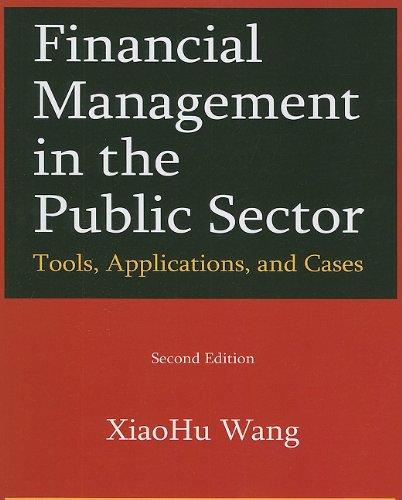Question
Q.1. Compare the relative liquidity characteristics of direct versus indirect investment in real estate. Discuss three factors that affect the liquidity of both forms of
Q.1. Compare the relative liquidity characteristics of direct versus indirect investment in real estate. Discuss three factors that affect the liquidity of both forms of investment. (02)
Q.2 The manager of an investment-grade fixed-income fund is concerned about the possibility of a rating downgrade of Alpha Motors, Inc. The funds holding in this company consists of 5,000 bonds with a par value of $1,000 each. The fund manager doesnt want to liquidate the holdings in this bond, and instead decides to purchase a binary credit put option on the bond of Alpha Motors. This option expires in six months and pays the option buyer if the rating of Alpha Motors bond on expiration date is below investment grade (Standard & Poors/Moodys BB/Ba or lower.) The payoff, if any, is the difference between the strike price and the value of the bond at expiration. The fund paid a premium of $130,000 to purchase the option on 5,000 bonds. A. What would be the payoff and the profit if the rating of Alpha Motors bond on expiration date is below investment grade and the value of the bond is $870? B What would be the payoff and the profit if the rating of Alpha Motors bond on expiration date is investment grade and the value of the bond is $980? (02)
Q.3.Discuss the rationales for passive, active, and semi active (enhanced index) equity investment approaches and distinguish among those approaches with respect to expected active return and tracking risk. (02)
Q.4 As CIO of The Annette Hansen Charitable Foundation (TAHCF), a U.S.-based foundation supporting medical research, Maryann Dunn will present to the trustees a recommendation that they revise the foundations strategic asset allocation to include direct investment in real estate The Foundations current portfolio and strategic asset allocation is allocated 50 percent common stocks/50 percent bonds. Twelve percent of the common stock allocation (six percent of the total portfolio) is invested in REITs. The risk-free rate of interest is 3.5 percent. The forecasted inflation rate is 3 percent. TAHCFs overall investment objective is to preserve the real (inflation-adjusted) value of assets after spending. Its spending rate is 5 percent of 12-month average asset value. TAHCFs cost of earning investment returns is 20 basis points per year. Exhibit -1 shows Dunns expectations for the current and proposed asset allocations. Dunns expectations for direct investment are based on unsmoothed NCREIF historical data adjusted for her current economic outlook

Dunn expects opposition to her proposal to come from a trustee, Bob Enicar. Enicar has stated at a prior board meeting: TAHCFs allocation to equity includes substantial investment in REITs. REITs typically provide risk diversification comparable to that of direct equity investments for a balanced portfolio of stocks and bonds while offering substantially more liquidity.
A. State and explain two financial justifications that Hansen could present for revising TAHCFs asset allocation to 45/45/10 stocks/bonds/U.S. direct real estate investment.
B. State and explain one disadvantage of the proposed revised strategic asset allocation.
C. Contrast unsmoothed and smoothed NCREIF indices and justify Hansens choice of the unsmoothed NCREIF Index in formulating expectations for direct real estate investment.
D. Draft a response to Enicars critique.
\begin{tabular}{|c|c|c|} \hline Measure & 50/50 Stocks/Bonds & \begin{tabular}{l} 45/45/10 Stocks/Bonds/U.S. \\ Direct Real|Estate Investment \end{tabular} \\ \hline Expected return & 5.5% & 5.9% \\ \hline Std. dev. of return & 11.8% & 10.8% \\ \hline \end{tabular}Step by Step Solution
There are 3 Steps involved in it
Step: 1

Get Instant Access to Expert-Tailored Solutions
See step-by-step solutions with expert insights and AI powered tools for academic success
Step: 2

Step: 3

Ace Your Homework with AI
Get the answers you need in no time with our AI-driven, step-by-step assistance
Get Started


